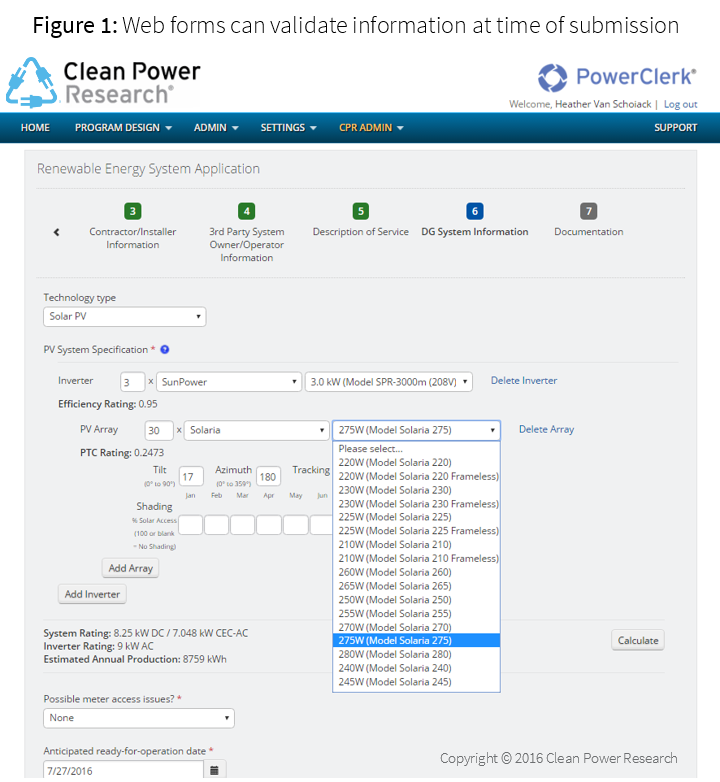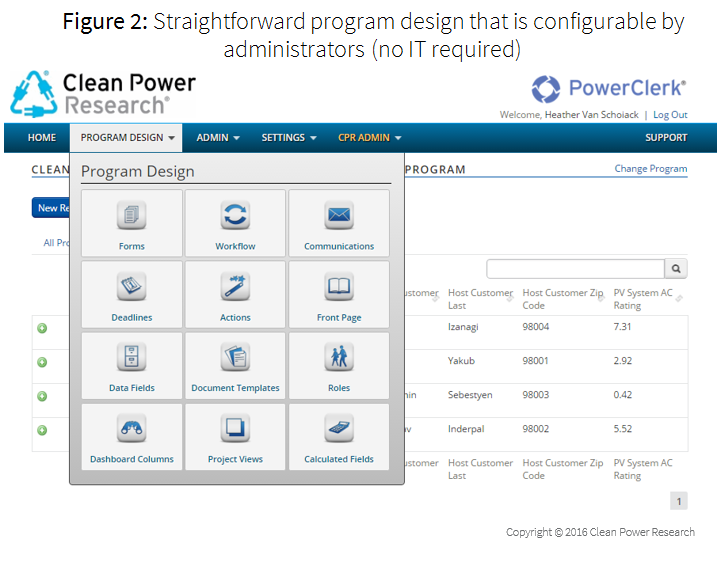In the era of web-based technologies that streamline business processes and enable automation, the natural solution to handling complicated application processes is an online platform. But what does ‘online’ really mean? Based on more than a decade serving more than 30 utilities and energy agencies operating energy programs, we’d like to take a stab at answering that question. An online distributed generation platform should offer the capability to:
- Fill out forms online. Online platforms should enable the creation of dynamic, web-based forms (not fillable pdfs) for applicants to use when submitting applications, and for administrators to use when reviewing the submitted projects. Application forms should validate data entered into fields, should never require duplicate data entry, and should dynamically change to collect the appropriate data and documentation for each type of application.

- See project statuses online. Each project’s status and review details should be up-to-date and visible to applicants 24/7/365 online.
- Automatically send notifications. Notifications should automatically be sent to appropriate stakeholders as frequently as each change in status. This keeps them informed of updates, and aware of additional requirements.
- Automatically notify of approaching deadlines. Automatic deadlines should notify stakeholders when approaching important process deadlines or before reaching an expiration date.
- Automate key process steps. The administrator should be able to define actions (such as notifications, deadlines and more) that are triggered automatically when a project’s status changes.
- Create a database of application information. The system’s database should be the single system-of-record for data and documentation. Data should be accessible for reporting, communication generation, documentation creation and dashboards.
- Secure integration options via web services. The system should have the capability to operate as a standalone or to be integrated with external systems (e.g., backend systems such as CIS, ERP, GIS, distribution planning software and more) with modern security and communication protocols. The system should also support integration with applicant CRM systems to automate application submission and review.
- Easily configure processes and automation. Administrators should be able to configure processes and automation at will online without requiring IT or consultant involvement.

- Set user access options. Role-based access that enables data control and inter-departmental collaboration required to operate an interconnection process.
- Utilize eSignatures. Contracts and other documentation requiring signature should be automatically generated (filled-in with data), and should be executed in an integrated eSignatures process.
- Utility ePayments. Collect participation or application fees directly from the applicant in order for them to submit an application.
With online application systems, paper copies, fillable PDF forms and wet-signatures are a thing of the past. Online systems capture and verify information via the web, store it securely, and make it available to the right people at the right time. Online systems also automate key process steps, streamlining workflows and enabling programs to easily scale with growing program volumes.
By taking applications processes online with services such as PowerClerk®, utilities and government agencies that handle incentive, interconnection, permitting and other programs will be able to meet the challenges of growing volumes and fast-changing requirements—and keep customers happy.
